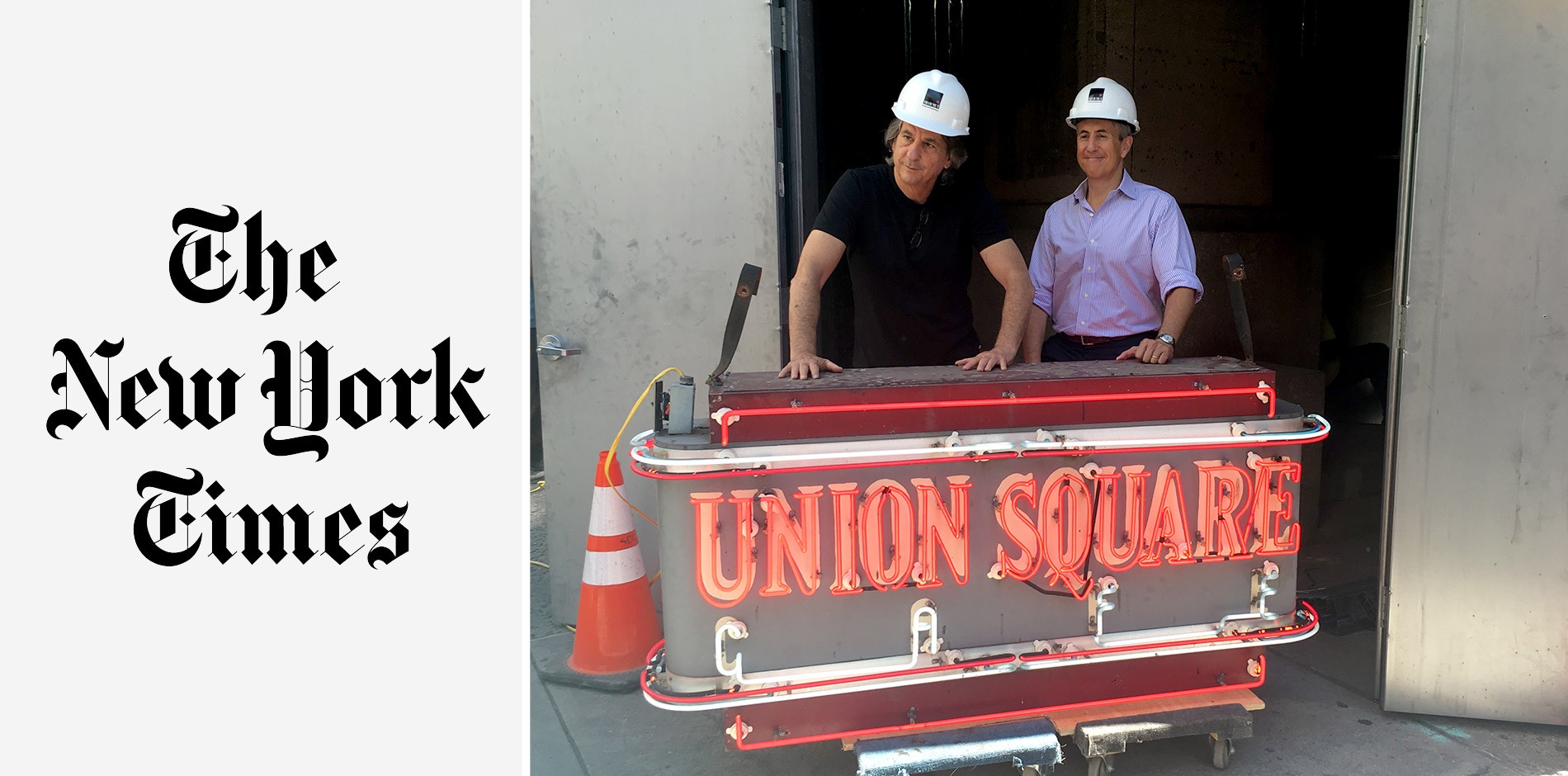Excerpt from The New York Times
NEW YORK, NY – On a clear February morning, executives from Union Square Hospitality Group and several architects sipped hot coffee and milled around a table in the partly demolished remains of a shuttered restaurant, waiting for Danny Meyer.
Winter light through immense, half-papered-over windows cast a pall on the stained, brown-and-yellow-tiled walls. A sculpture of a red crab dangled above the front door. Architectural drawings were spread across the table. Mr. Meyer arrived and everybody turned toward them like physicians attending to a critical patient.
When Union Square Cafe reboots next month in its new location at 19th Street and Park Avenue South—the bygone home of City Crab & Seafood Company—Mr. Meyer’s first, signature restaurant will be engaged in a quasiscientific enterprise. Take one of the most cherished high-end establishments in the city, a longtime regular atop the Zagat most-popular list. Keep the chef, the staff, even the old favorites from the menu, but (isolating the variable) move three blocks.
Then determine: Precisely how much, in a business built on food and service, does “place” (more specifically, architecture) matter? And is it possible to uproot a classic without destroying its essence?
It’s hard to think of many attempts that have worked. The man in charge of this experiment is the architect and restaurant whisperer David Rockwell, whose design credits include a Tony for the musical “She Loves Me,” hotels from the W in Paris to the Cosmopolitan in Las Vegas, and restaurants like Nobu Fifty Seven in Midtown Manhattan and Gato downtown.
For the last year or so, Mr. Rockwell and his colleagues at Rockwell Group have been laboring to extract the ambient DNA of the old Union Square Cafe and implant it into a new, very different body.
Part of the experiment has involved mixing two detail-crazy, yet dissimilar auteurs.
“David is allergic to the status quo, while Danny arrives at a project with about 15 design elements he already wants, which come from places he’s been, things he’s found,” said Richard Coraine, Union Square’s chief development officer, who has worked with both of them for years.
“Danny will say, ‘I’ve been to this place where you can see into the wine cellar,’ and David will pull out a piece of tracing paper and pick up a red pen in his left hand, waving it around. I’ve told him he’s got the best left arm since Sandy Koufax. ‘What if the wine rack looked like an apothecary cabinet?’ he’ll ask Danny, and then start sketching.”
That exchange produced the wine room at Maialino, Mr. Meyer’s Italian restaurant on Gramercy Park.
For Union Square Cafe, Mr. Meyer didn’t want “another Rockwell,” as he put it to me last fall, when I started dropping in from time to time on planning sessions, where the two men sometimes approximated an old married couple.
Mr. Rockwell would propose some floor tile or light fixture. Then he would nod and purse his lips without actually agreeing while Mr. Meyer would make a countersuggestion, claiming to defer to Mr. Rockwell’s expertise but expecting to get what he wanted.
What he wanted was Union Square Cafe, only different.
“We’re usually called on to invent things at a much more visible, bigger scale,” Mr. Rockwell said. “The invention here took place more on a micro scale.”
So did meetings, where Mr. Meyer’s team, including Sam Lipp, Union Square Cafe’s director of operations, and Carmen Quagliata, the restaurant’s executive chef, would suddenly deliver a dissertation on the turning radius a barista needs behind the coffee station, or the effects of citrus on different types of wood.
Mr. Meyer himself spent the better part of one session musing on the width of the mullions in the new windows. He wanted them to recall the ones in the old restaurant so that, from the sidewalk, even before entering the restaurant, as Mr. Coraine put it, “people will feel they’ve come home.”
Mr. Rockwell elaborated: “The best restaurant designs are made up of large decisions and lots of tiny details. But ultimately, what comes from long experience, Danny’s and mine, involves what I’d call ‘in between’ things: Designing for when a restaurant isn’t full. Ensuring there’s easy eye contact from every table with the waiters’ stations, so diners feel they’re always in control, never swallowed up in a big space. Designing spaces so people want to explore the room, because a restaurant shouldn’t be a one-liner.
“A restaurant should unfold, like a series of snapshots,” he added. “That was part of what defined the original Union Square Cafe. It was episodic.”
The original occupied a side street that dead-ends into Union Square Park. It was what Mr. Rockwell calls a “slow” locale. The new address, Park Avenue South, is almost the reverse, choked with traffic and lined with singles bars. Mr. Meyer and Mr. Rockwell agreed from the start that the new entrance should be on 19th Street, not Park.
That was the easy move. At 10,000 square feet, the new place is as cavernous as the original, 6,300-square-foot Union Square Cafe was a deteriorating rabbit warren. Faucets leaked, the wiring dated back to the Truman administration. Repairs would cost a fortune.
Continue to The New York Times here
